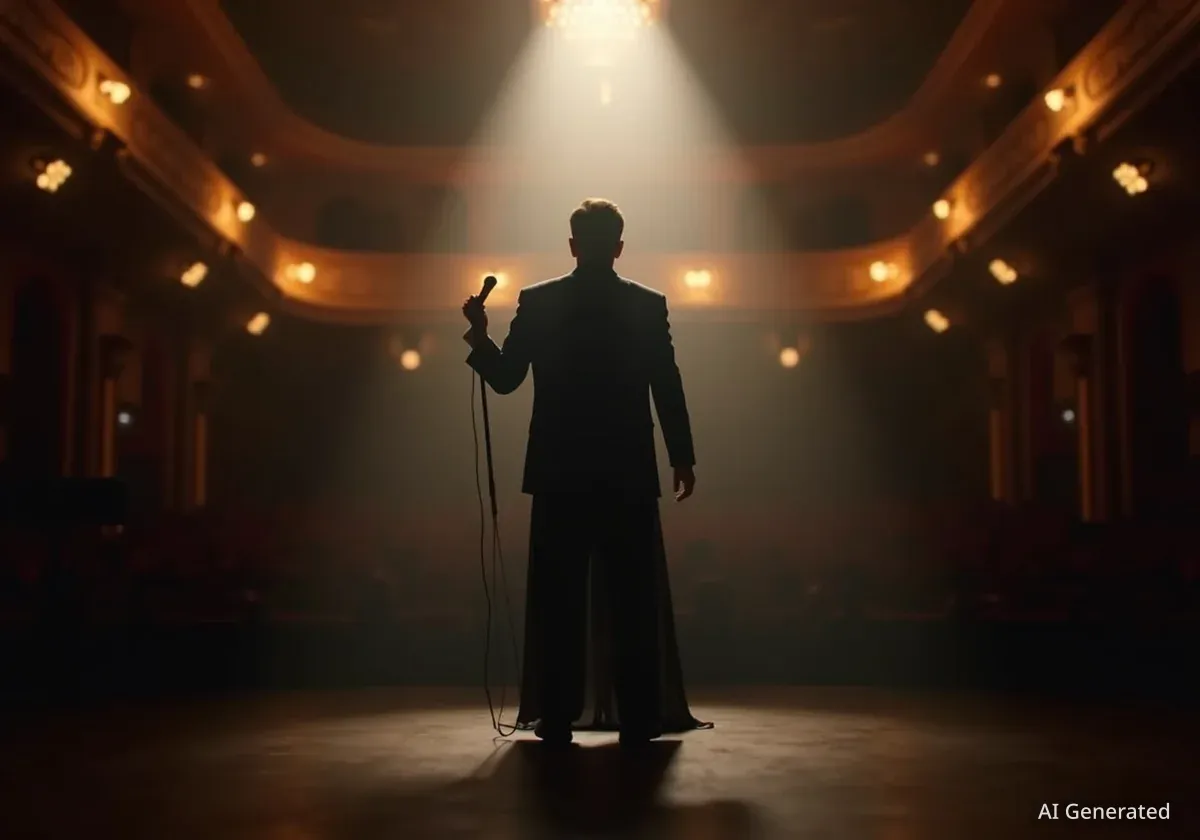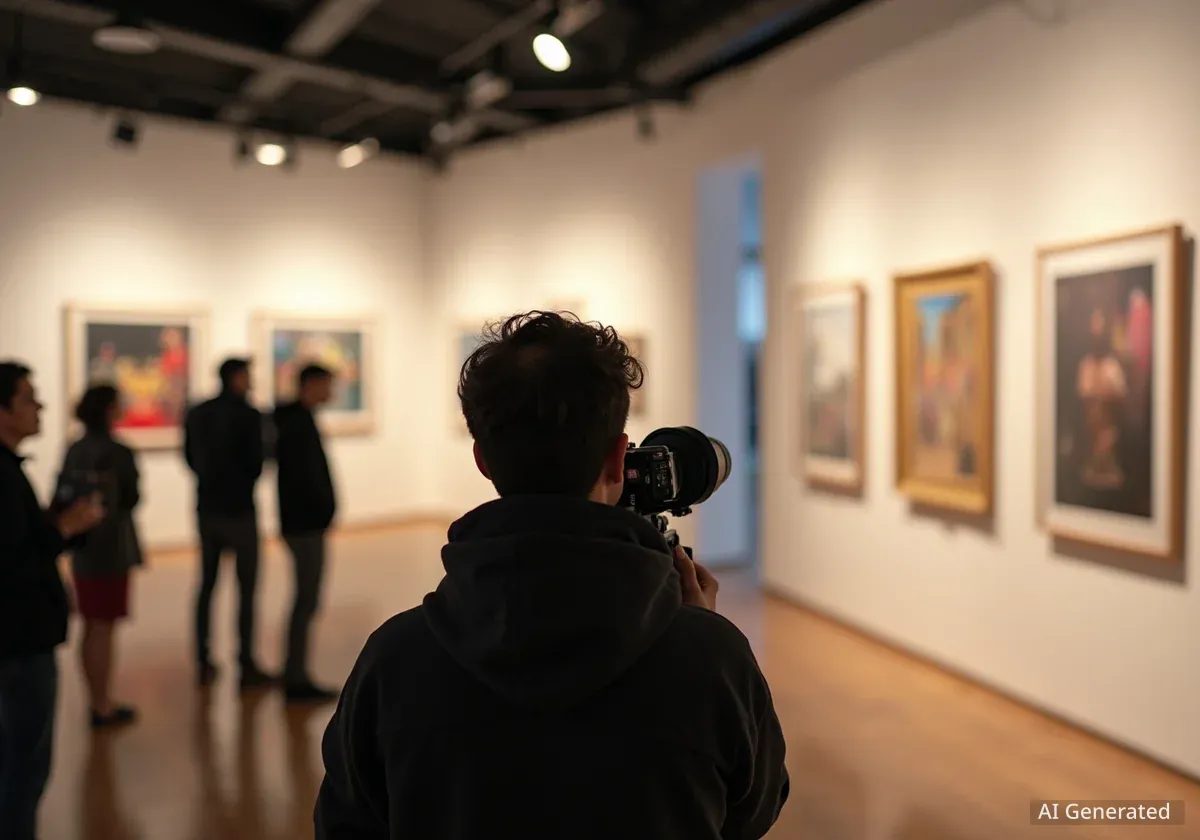The Hammer Museum's highly anticipated biennial exhibition, "Made in L.A. 2025," has opened to a wave of criticism, with many in the art community suggesting the showcase lacks the vibrant energy and clear vision that has defined previous iterations. The event, a cornerstone of the Southern California art calendar, is being described as a missed opportunity to capture the dynamic spirit of the city's current art scene.
While the biennial is intended to be a definitive survey of emerging and underrecognized artists working in Los Angeles, this year's installment has been characterized by some as disjointed. This has led to a broader conversation about the role of such large-scale surveys and whether they can still effectively represent a city's diverse artistic output, especially when commercial galleries are seen to be hosting more compelling work.
Key Takeaways
- The "Made in L.A. 2025" biennial at the Hammer Museum is receiving critical reviews for its perceived lack of a strong curatorial theme.
- The exhibition is being contrasted with the city's thriving commercial gallery scene, which is currently showcasing numerous well-received shows.
- Historically, "Made in L.A." has been a major platform for launching the careers of Los Angeles-based artists.
- The current reception raises questions about the challenges of curating a definitive survey of a large and diverse art community.
A Biennial Under Scrutiny
The opening nights of the "Made in L.A." biennial are typically landmark events, drawing significant crowds and generating excitement throughout the art world. For years, the exhibition has been celebrated for its ability to identify and elevate new talent, providing a crucial platform for artists who live and work in the sprawling metropolis of Los Angeles.
However, the 2025 edition appears to have fallen short of these high expectations. Reports from the opening and subsequent reviews point to a general sense of disappointment. The primary critique is not necessarily aimed at the individual artists but at the overall curatorial direction. Critics have noted an absence of a unifying argument or a compelling vision for what defines the Los Angeles art scene at this moment.
This year's showcase features a range of works, including paintings and sculptures by artists like Beaux Mendes. Some pieces have been singled out for individual merit, such as Mendes's work exploring themes of the body and nature. Yet, these highlights seem to exist as isolated successes rather than components of a cohesive and impactful exhibition.
The Role of a Biennial
A biennial is a large-scale international contemporary art exhibition held every two years. Famous examples include the Venice Biennale and the Whitney Biennial. Their purpose is to present a snapshot of the current state of art, identify emerging trends, and provoke dialogue. The success of a biennial is often judged by its ability to present a coherent and thought-provoking curatorial perspective.
Contrasting Fortunes in the L.A. Art World
The perceived shortcomings of "Made in L.A. 2025" are made more apparent by the concurrent vitality of the city's commercial art galleries. While the Hammer's survey seems to have stumbled, numerous smaller, independent spaces across Los Angeles are reportedly hosting innovative and well-curated shows.
This contrast has fueled a discussion about where the true pulse of the city's art scene can be found. Some observers suggest that the agility and focused vision of commercial galleries allow them to respond more quickly and effectively to emerging trends than a large, institutionally-backed biennial. These galleries often work closely with a smaller roster of artists, enabling a deeper and more developed presentation of their work.
The situation highlights a potential disconnect between a major museum's attempt to define a city's art and the reality of what is happening on the ground. For art enthusiasts and collectors in Los Angeles, the message seems to be that the most exciting discoveries this season may be located outside the museum's walls.
Los Angeles: A Global Art Hub
Over the past two decades, Los Angeles has solidified its position as a major international center for contemporary art. The city is home to a high concentration of working artists, influential art schools like CalArts and UCLA, and a growing number of world-class museums and galleries. This makes the "Made in L.A." biennial a particularly high-stakes event.
The Challenge of Capturing a Moment
Curating a survey exhibition like "Made in L.A." is an immense challenge. The goal is to distill the creative output of one of the world's most diverse and populous artistic communities into a single, coherent presentation. This requires making difficult choices about which artists and themes to include.
A successful biennial often achieves one of several things:
- Introduces new talent: It shines a spotlight on artists who are not yet widely known.
- Identifies key trends: It highlights recurring themes, materials, or ideas present in the contemporary art world.
- Makes an argument: It presents a specific curatorial thesis about the state of art and culture in that location.
The central criticism of the 2025 edition is that it struggles to achieve any of these goals in a convincing way. Without a strong curatorial hand to guide the viewer, the collection of works can feel random and disconnected, leaving the audience without a clear takeaway.
"If the winds align, ‘Made in L.A.’ will also offer some form of curatorial argument: a vision of the city, or, say, a proposal for what it is lacking. This year, I got almost none of that."
This sentiment, echoed in early reviews, underscores the feeling that the exhibition lacks the critical nerve that has made past biennials so essential. For an event designed to take the temperature of the L.A. art scene, the 2025 version has been described as having a weak pulse.
Looking Ahead
The response to "Made in L.A. 2025" will likely prompt reflection at the Hammer Museum and within the broader curatorial community. The exhibition's reception serves as a reminder of the immense pressure and high expectations placed on institutional surveys.
As the art world continues to decentralize, with more activity happening online and in alternative spaces, the role of the traditional museum biennial is constantly being re-evaluated. The tepid reaction to this year's show may encourage future curators to take more risks, narrow their focus, or find new ways to engage with the sprawling, ever-changing landscape of art in Los Angeles. For now, the city's art lovers are finding more to celebrate in the vibrant commercial galleries that continue to thrive.




